Cynog
Photo © Martin Crampin
Click to show suggested citation for this record
https://saints.wales/saint/48 (accessed 5 Apr. 2025)
More information
Feast Day: 8 October
Baring-Gould & Fisher give references to a number of sources which agree on 8 October. They also, however, note others which suggest 9 October, or the second Thursday in October, or 14 March. They say that his feast was 11 February in Ireland, and this is the date that Hugh Thomas, very much a Breconshire man, takes from a martyrology. He goes on, however, to say that because this date often fell in Lent, and could not be 'so hospitably keept as the People desired', it was now observed all over the county on the second Thursday in October.Browne Willis records a date of 7 October in association with two Cynog dedications, which is intriguing: whilst the 8th and 9th could be reconciled with 'the second Thursday in October', the 7th cannot. Browne Willis gives 8 October at Llangynog in Montgomeryshire. Cynog is given as 9 October in the modern Church of Wales prayer book.
More information
Texts
Although no Life of Cynog has survived, there are primary sources for Cynog and his cult in Welsh, Latin and English, spanning the period from the late twelfth to the early eighteenth centuries.One of the earliest sources for Cynog is the De Situ Brecheniauc of around 1200, and its later variant, the Cognacio Brychan, which contains additional details, such as his conception at the rape of Banadylued, daughter of the king of Powys, and his baptism by 'saint Gastayn' of Llangasty-Talyllyn. He is also listed in the genealogical text Plant Brychan.
Gerald of Wales describes Cynog's torque and details the traditions surrounding it in his journey through Wales (his Itinerarium Kambriae). Interestingly, Gerald observes that Brychan had twenty-four saintly daughters, but does not associate Cynog with Brychan.
Cynog is the subject of fifteenth-century poems by Hywel Dafi and Dafydd Epynt, both of which describe him as a king in Ireland who renounced his throne for a religious life. He battles with giants and monsters with the help of his miraculous torque, but was martyred by decapitation. There are also briefer references to Cynog in at least seven other medieval Welsh poems, such as at the outset of Siôn ap Hywel's poem to Tyrnog, in which Tyrnog, Pedrog (of Y Ferwig on the Ceredigion coast) and Cynog are described as the three saints who will endure as long as life itself.
An oral tale concerning the saint was recorded in about 1702 by Hugh Thomas. This English-language account shares various details with the medieval sources, but is quite distinct in many others.
Oral tale recorded in about 1702 in a manuscript of Hugh Thomas from Breconshire.
Later fifteenth-century poem to Cynog, surviving in a number of manuscripts.
Poem to Cynog from the second half of the fifteenth century by Dafydd Epynt, who was probably from Merthyr Cynog.
Thirteenth-century Latin genealogical text.
An account of Gerald's journey through Wales as he accompanied accompanying Baldwin, archbishop of Canterbury, in 1188.
A Welsh-language genealogical text that circulated from the fifteenth century onwards.
Genealogical tract found in the twelfth-century Book of Leinster.
Places
The principal focus of the cult seems to have been at Merthyr Cynog. Other dedications are mostly in and near Breconshire, but there are inevitably uncertainties since Cynog was a recurrent name in early Wales, and other characters – including, for instance, David's successor as bishop of St Davids – may also appear in place-names and dedications. The place-name Llangynog is found in five different counties, and of the geographical outliers the central focus of his cult in Breconshire, it might be suggested that the three Pembrokeshire and Carmarthenshire place-names (including a second, now lost, instance of Merthyr Cynog) may involve a different Cynog, perhaps the bishop, but this cannot be known for certain. Although isolated to the north, there is some context to suggest that the eponym of Llangynog in Montgomeryshire was identified with the son of Brychan, at least by the eighteenth century. | Church Dedication |  | Well |  | Placename |  | Landscape feature |  | Modern |  | Text |
Further reading
S. Baring-Gould and John Fisher, The Lives of the British Saints (London: Honourable Society of Cymmrodorion, 1908), 264–71 View online
Elissa Henken, Traditions of the Welsh Saints (Cambridge: D.S. Brewer, 1987), 178–84, 336–7
J.D. Evans and M.J. Francis, 'Cynog: spiritual father of Brycheiniog' in Brycheiniog (1994–5)
Gwenno Angharad Elias, 'Llyfr Cynog of Cyfraith Hywel and St Cynog of Brycheiniog' in Welsh History Review (2006)
Images
No medieval images of Cynog are known and modern depictions are few, with examples in churches at Brecon, Defynnog and Ystradgynlais. At Brecon Cathedral, Cynog is depicted in a stained glass window with further his father Brychan and sister Alud. Cynog wears his famous torque and has a fine pseudo-penannular brooch, while holding a cross and a martyr's palm. There also appears to be some approximation of the local landscape in the background of the window.View images of Cynog on the Imaging the Saints of Wales database


